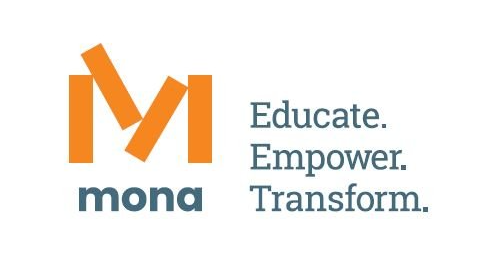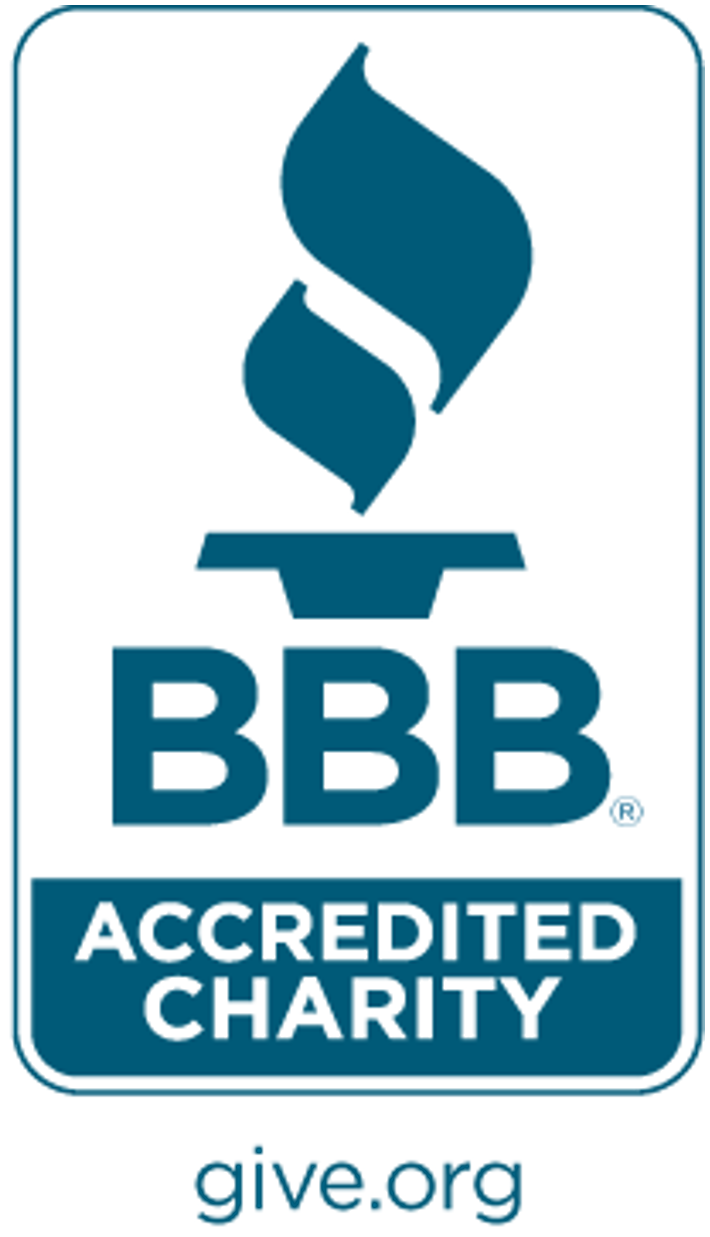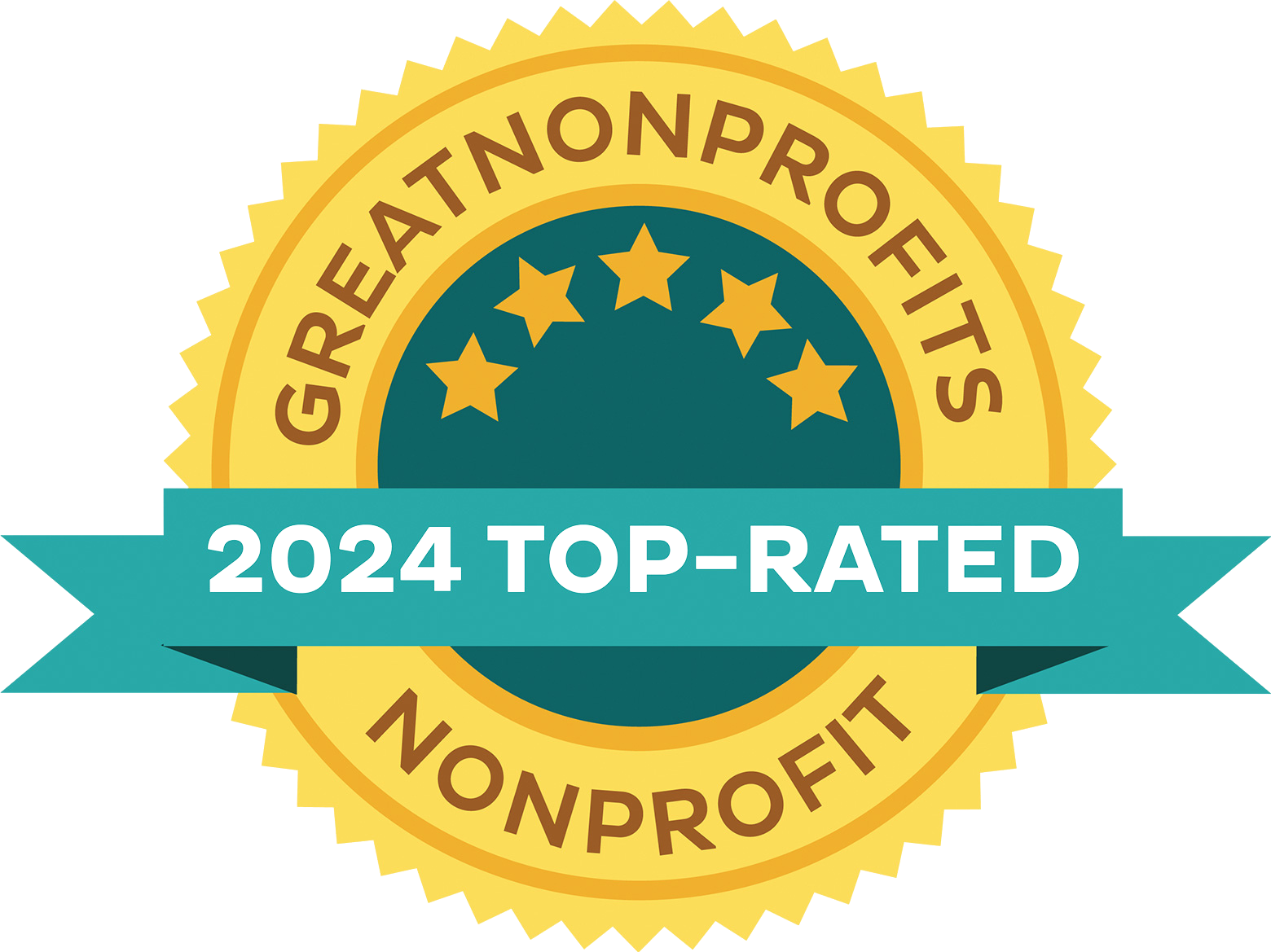Changing Lives, Building Community: Sunflower Mission’s Work in Vietnam
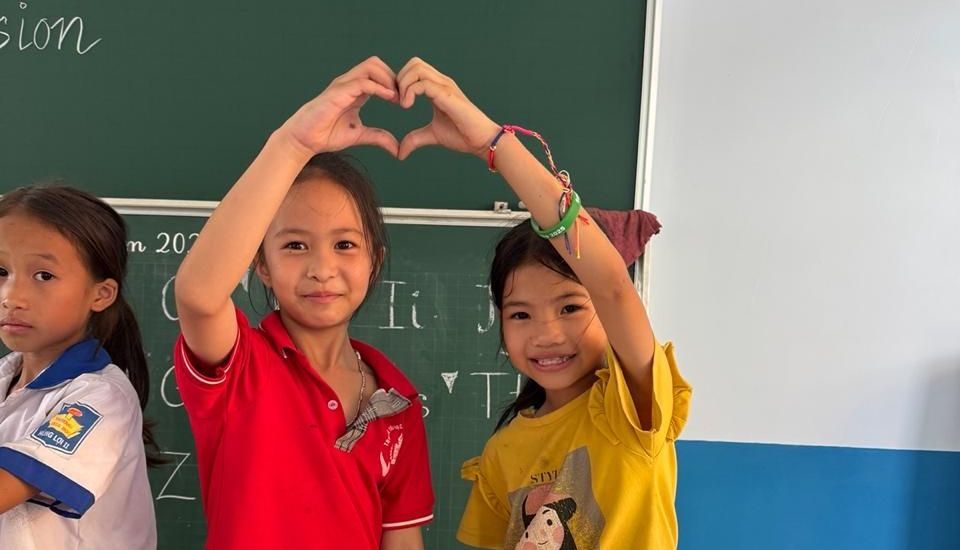
June 2025 - It brings me great joy to share reflections from my recent two-week trip to Vietnam to participate in Sunflower Mission’s annual work camp. The workcamp consists of volunteers traveling to Vietnam to help finish school buildings and build relationships with local students and communities. These experiences foster compassion, leadership, and cultural connection among individuals from the Vietnamese diaspora.This year's work camp focused on the completion of a Mona-funded primary school located in the Hung Loi 2 Commune of Vietnam's Tuyên Quang province.
This experience was both deeply moving and energizing. Sunflower Mission has been a Mona Foundation partner since 2007, and this trip clearly demonstrated to me why. Their work is heartfelt, effective, and transformative. Our ongoing investment in this organization is changing lives in rural Vietnam and strengthening bonds in the Vietnamese-American community.
Sunflower Mission Overview
Founded in 2002, Sunflower Mission is a volunteer-driven nonprofit that builds schools, funds scholarships, and cultivates leadership among Vietnamese and Vietnamese American youth. Over the years, Sunflower Mission has built 63 schools comprising 194 classrooms, awarded over 27,000 scholarships to K-12 and college students, and supported the graduation of more than 800 college students in fields including medicine, engineering, education, and finance.
Sunflower Mission works to scout school building locations where they can build strong partnerships with the local communities. The typical community contribution to building the school includes land, utilities, classroom furniture, a paved school yard, school gate, and fence. Once the school has been constructed by Sunflower Mission, complete care and control is turned over to the local officials. The only caveat to the community ownership is that Sunflower Mission commits to funding any major future repairs that are needed such as destruction from a storm.
When scouting the locations for schools, Sunflower Mission considers several factors. In some years, Sunflower Mission will build a brand-new school where there has not been one before. These schools provide access to education for children who previously did not attend due to their distance from the current school. Furthermore, it allows those students who were previously walking great distances to attend another school to preserve their energy for their academics. In other years, Sunflower Mission will build a new building or classrooms at a location that already has a school with unsafe learning conditions. These new buildings can provide a proper, conducive, and safe learning environment with amenities such as electricity, fans, bathrooms, and more. These new buildings and classrooms also allow children to attend a full day of school. Due to a lack of space, often children will alternate morning and afternoon classes, with the construction of more spacious buildings, children can learn all day. These schools are always located in rural areas that Sunflower Mission believes have the potential for community development.
Beyond its work in Vietnam, Sunflower Mission also cultivates leadership among Vietnamese Americans, primarily youth through its SEEDS program.
SEEDS stands for
Students Expanding Education by Donating Services. Since 2008, the students and young professionals of SEEDS have played an integral role in Sunflower Mission’s operations by acting as a task force to carry out volunteer work and implement new initiatives. Through their experiences, SEEDS have the opportunity to develop not only teamwork and leadership, but also a greater appreciation for education, service, and the impact that they are able to make in the world.
Since the start of our partnership with Sunflower Mission, Mona Foundation has contributed over $1.1 million to help build and renovate 48 classrooms including 10 new schools, provide over 6,000 scholarships, and support other educational initiatives across rural Vietnam. Mona funded schools currently serve approximately 1,620 students annually.
Shared Purpose in Ethics and Service
Sunflower Mission’s work is grounded in a core value, a value that is inscribed on the front of every school they build: “Tiên học lễ – Hậu học văn.” This phrase can be translated as “First learn manners, then learn academics,” though it also carries the meaning of “First learn morality.” As described to me by Thanh Bui, Vice President of Sunflower Mission’s Board of Directors, this guiding principle emphasizes that character and ethical behavior are the foundation of true learning. It reflects a holistic vision of education, one that aims to nurture not only intelligent students but also kind, respectful, and morally grounded human beings. This value is clearly woven throughout all aspects of Sunflower Mission’s work and indicative of Sunflower Mission and Mona Foundation’s shared approach and values.
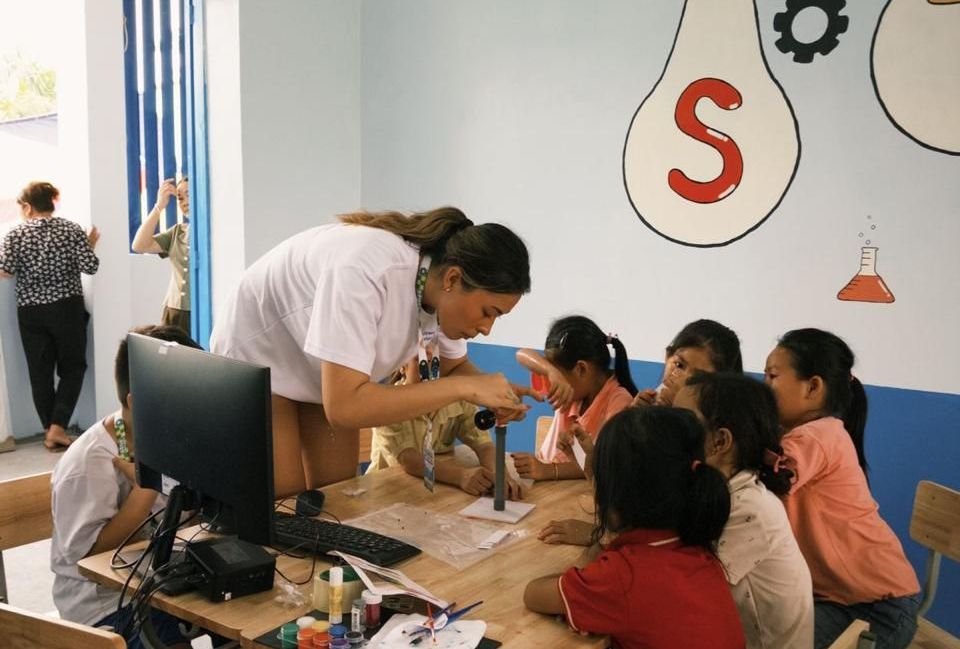
Days Spent at the School
We arrived on a misty, rainy morning in Hung Loi 2 Commune. After an hour and a half drive through bumpy mud roads, surrounded by lush mountains and green rice paddies, we turned the corner to view the bright blue and white school standing large and tall in contrast to the few surrounding wooden and stone structures. I was on the bus seated next to a third time work camper who turned to me with tears of joy, “seeing the school for the first time is always my favorite part, it never ceases to make me emotional.” Despite the weather, the atmosphere was bright with excitement. Children greeted us with big smiles and waves.
The rural mountain commune is home to about 6,000 people. Most of the families in Hung Loi 2 work in agriculture and live off the land, often supplementing with hunting or foraging. The school we were there to help complete will serve 300 children in grades K through 5. It was designed to replace the usage of unsafe, makeshift wooden classrooms. Many of the children this school will serve are malnourished, subsisting on diets that consist primarily of rice, and most have never received medical care. The Sunflower Mission scholarships received by the students who are most in need will be vital in ensuring these children remain healthy, nourished, and in school.

Our work camp team consisted of about 55 Vietnamese-American individuals as well as a group of current Sunflower Mission college scholarship recipients. Shortly after arrival, we did what we came to do, and we got to work. My group painted one of the rooms inside the school including a mural designed by one of our team members, a college student named Kendall. The days were filled with painting, scraping, washing brushes, and laying bricks. I was endlessly impressed with the hard work and dedication of every Sunflower Mission volunteer. There was palpable joy and days filled with manual labor paired with meaningful conversation on the unique opportunity to return to one’s home country to further a cause near and dear to the hearts of the work camp volunteers.
However, it was not just labor, each day a group of students from the school joined us, we had the opportunity to play games, share meals, and on several days witness both adorable and beautiful cultural dances by the kids. We also participated in English and STEAM workshops with the kids. The students in Hung Loi 2 are from the Hmong ethnic minority and speak Vietnamese as a second language, though this added a level of difficulty in speaking even for native Vietnamese speakers we did not let this stop us. I am now the Google Translate voice to text apps biggest fan as it allowed me to connect even in small ways with many of the students.
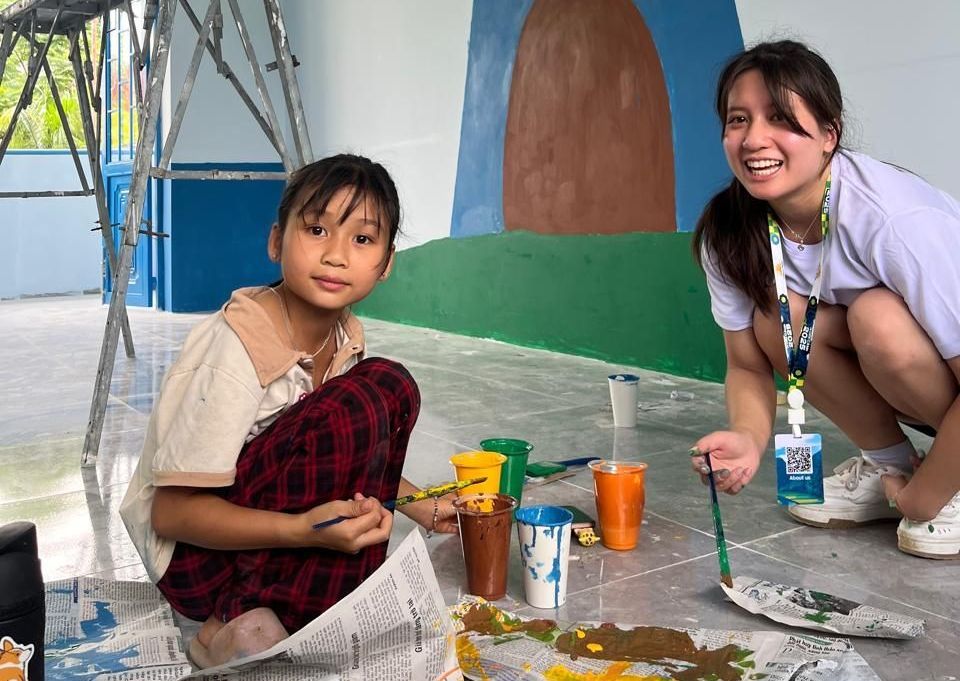
I spent several days with Chuyen, a thoughtful 10-year old girl. She shared her candy with me and held my hand as we spent the days together. Thien, another young boy, told me about his long journey to school, his love of soccer, and his dreams of becoming an English teacher. 11-year-old Yen insisted that hold her stuffed animal as she informed me it would bring me good luck. These interactions along with many games of war, slide, and ‘keep the balloon of the ground’ left me with love and lasting memories.
Among the Sunflower Mission team all of our days ended with moments of connection, playing games on the long bus drives, sharing meals, and exchanging stories.
At weeks end, the school was bright and colorful with the addition of classroom murals, a playground, an interactive library, and a computer room. The school was outfitted with boys’ and girls’ bathrooms complete with running water and soap as well as fans and air-conditioning units in each room. The building and its amenities stood in sharp contrast to the wooden remains of the shack-like structure where school was previously being held.
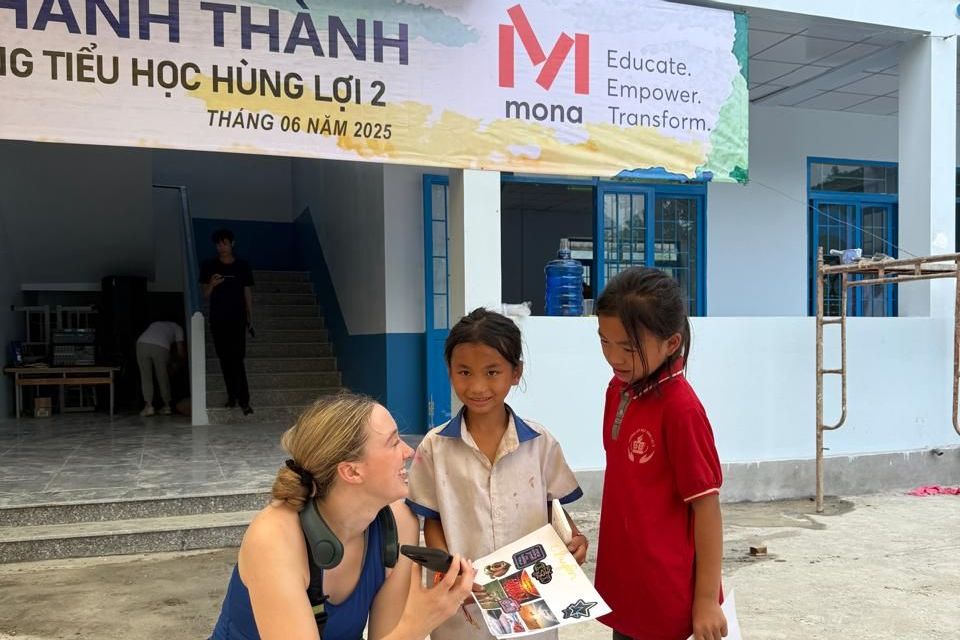
The Hope Project: A Cycle of Social Good
One inspiring example of Sunflower Mission’s impact is the Hope Project, a student-led initiative created by Vietnamese college students who are themselves recipients of Sunflower Mission scholarships. These young leaders not only attended the 2025 work camp as volunteers but also raised funds to purchase bicycles for younger students who live far from school. In conversation with students, I spoke to several such as Thien who was walking for over an hour each morning to reach school. The smiles on their faces when receiving the bikes were something I will never forget. The Hope Project perfectly illustrates the cycle of social good that we champion at Mona. Sunflower Mission is cultivating young people who receive support and go on to create opportunities for others.
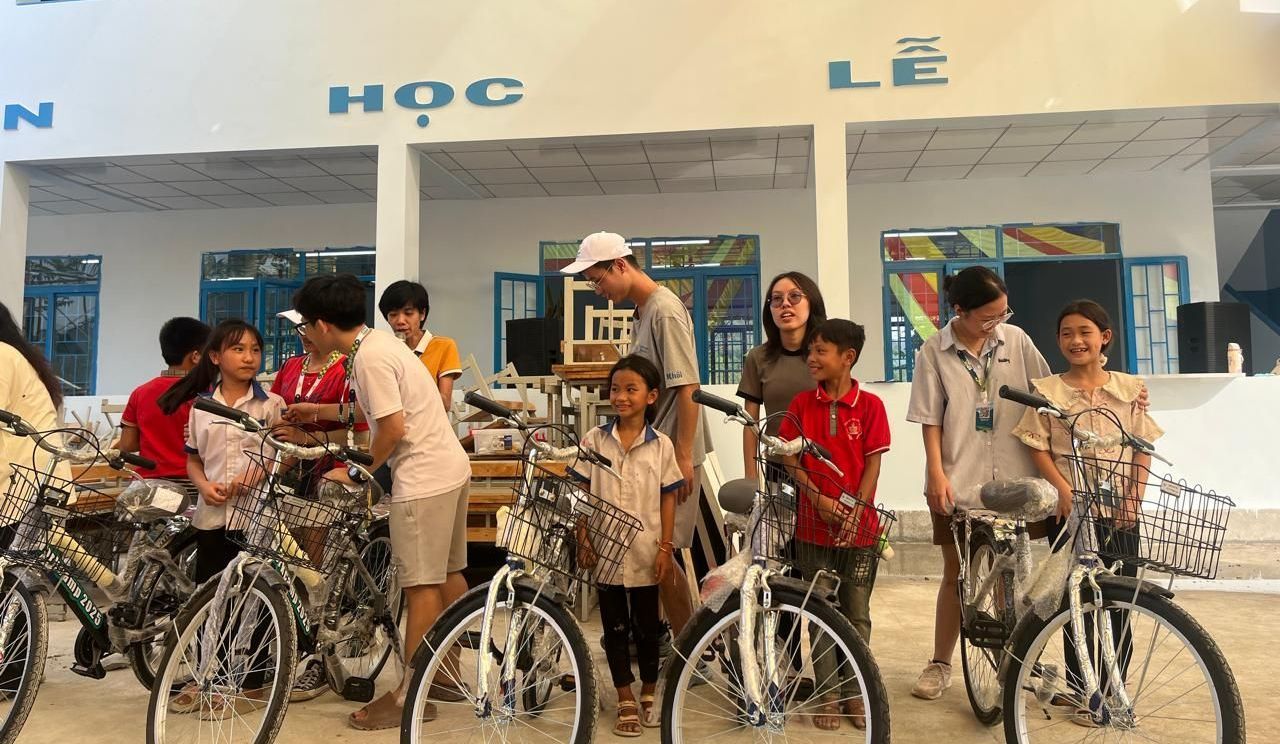
Scholarships
Another story that powerfully reflects Sunflower Mission’s impact is the origin of their college scholarship programs and the naming of the Le So Memorial Scholarship. Years ago, Trong Le lost both of his parents at a young age and he was raised by his grandfather, who had no income. Determined to keep his grandson in school, the grandfather begged and slept on the streets to pay for his education. When Sunflower Mission learned of their situation and his grandfather’s dedication to education, they stepped in to provide a college scholarship. This act was the very start of Sunflower Mission’s college scholarship programs. Trong went on to attend college, graduate, and secure a high-paying job at a large company. With his success he was able to buy a house for his grandfather in his village. The young man became deeply involved in Sunflower Mission’s work. He served as the coordinator for their Sponsor A Student Scholarship program for 15 years. His grandfather recently passed away, and in his honor, Sunflower Mission named their most prestigious scholarship after him, the Le So Memorial Scholarship.
Sunflower Mission’s K-12 and College Scholarships alike are changing lives across Vietnam. The organization has three scholarship offerings:
DAO-LE Scholarship: Provides K–12 scholarships to students with significant financial need who attend Sunflower Mission–built schools with the aim to keep children in school. The scholarship covers both school fees and families’ needs such as food, clothes, and school supplies.
Through conversation with Sunflower Mission board members, I gained deeper insight into the K-12 Scholarship process. When a new school is built, the number of scholarships available is based on the previous year’s budget. The organization is intentional about ensuring long-term support, so once a student is awarded a scholarship in elementary school, they continue to receive it until graduating from high school as long as they remain in need and in school.
Eligibility is reassessed annually. For students in elementary school, the primary factor is continued financial hardship. As students transition into middle and high school, ongoing support also depends on their academic commitment. Students must demonstrate that they are engaged in school and performing academically.
Local school leaders, who know the students and families best, play a key role in identifying those most in need. Their recommendations are also informed by official government data, which ranks families based on financial status and overall well-being. Typically, scholarships are prioritized for the bottom ten percent of students in terms of financial need.
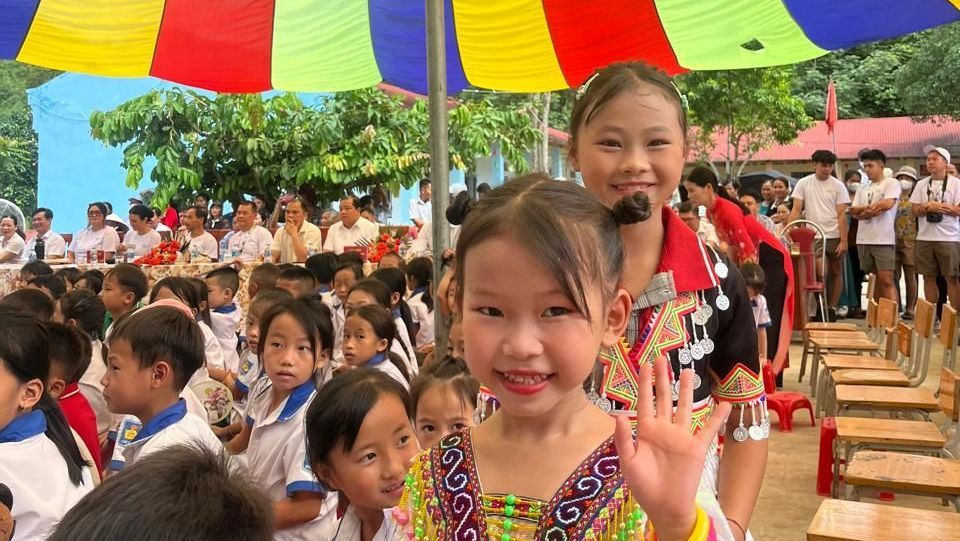
Sponsor A Student (SAS) Scholarship: Connects donors with individual college students from low-income backgrounds, many of whom are former K–12 scholarship recipients. Students must maintain satisfactory academic performance throughout their studies.
Le So Memorial Scholarship of Excellence (LSMSE): A highly selective college scholarship awarding $2,000 annually (full tuition) to students with academic excellence, financial need, and strong moral character, prioritizing STEM, business, education, and medical fields.
We had the honor of hearing several current and former SAS and LSMSE recipients share their stories. Each story was as heartfelt as the next, recounting hardships and desperation followed by the joy and relief of receiving a Sunflower Mission college scholarship. I can certainly say that I walked away from meeting these students deeply impacted.
One LSMSE recipient, Valerie, shared with us her life story of losing her mother at a young age and being abandoned by her father. She shared the desperation and helplessness she felt before receiving her scholarship, not sure how she would ever afford college. The manner in which she spoke about how her Sunflower Mission scholarship community was a family for her touched me deeply. She shared that “for the first time in my life I found people who love me and I love them too, for the first time in my life I feel I can say I am loveable, because of my childhood I used to feel that I am not worth loving, and I meet them and I feel I am loveable. They are a family for me.” Valerie went on to speak about how, beyond this, Sunflower Mission helped her grow and taught her how to be a leader. She stated that leader still feels like a big word to her but now she can say she is one. “I am now working in a Chinese firm as a sales manager, which I never believed I could become.” She went on to share her deep gratitude and close with a promise. “We promise you to become ambassadors of this program that carry on hope and resilience to society.” Valerie’s love, passion, and spirit were equally matched by every scholarship recipient I had the honor of speaking with. I am endlessly impressed with the loving and familial community Sunflower Mission has built for every single one their college scholarship recipients.
Powered by Volunteers
Sunflower Mission’s ability to do so much with not a single full-time paid employee is a truly unique and impressive feat, it is also a testament to the dedication of its volunteer leaders.
The scholarship delivery system is powered by a remarkable woman—a Catholic nun who travels across regions using public transportation, sleeping in churches, and hand-delivering scholarships to students.
Zenda, a hospital operations professional and self-development coach, volunteers her time to coordinate the Le So Memorial Scholarship. She organizes annual retreats for scholarship recipients where they stay up all night talking, engage in leadership and self-development workshops, and build strong bonds with each other. Her efforts help transform the scholarship experience from simply financial aid into a community of moral support and personal growth.
During one of our dinners in a heartfelt reflection, Noah, the 17-year-old son of board member and work camp coordinator Elena Thuy, teared up as he shared how proud he is to have her as a mother. He commented on the sheer volume of hard work and personal time she dedicates to making these trips happen and his gratitude as he sees the impact her work has on so many.
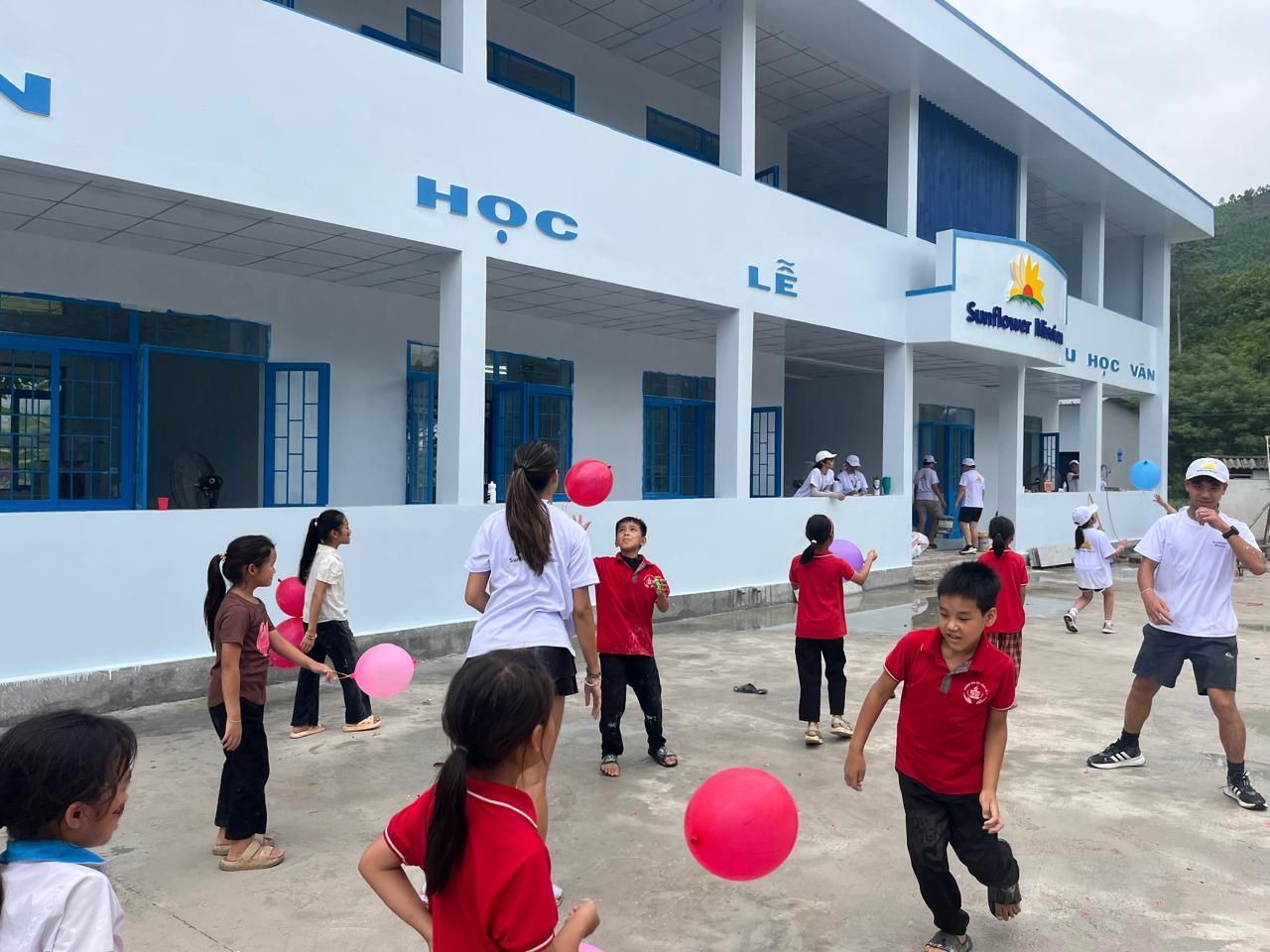
Final Thoughts
During one of our lunches, with the help of a Sunflower Mission Board Member translating, I had the chance to ask the children what they wanted to do when they grew up. I received answers such as English teacher, artist, and IT professional. That moment touched me deeply. It wasn’t just the joy on their faces; it was hearing their dreams paired with the knowledge that through the construction of this school, the provision of scholarships, and even the bicycles that help them get to class, Sunflower Mission is helping bring those dreams within reach.
This work means everything to me because I want to live in a world where every child has the chance to live a life of their own choosing. I feel privileged to have witnessed in person how Sunflower Mission is doing the work to bring that world closer to reality.
With Gratitude,
Sophia Moser, Global Program Officer
